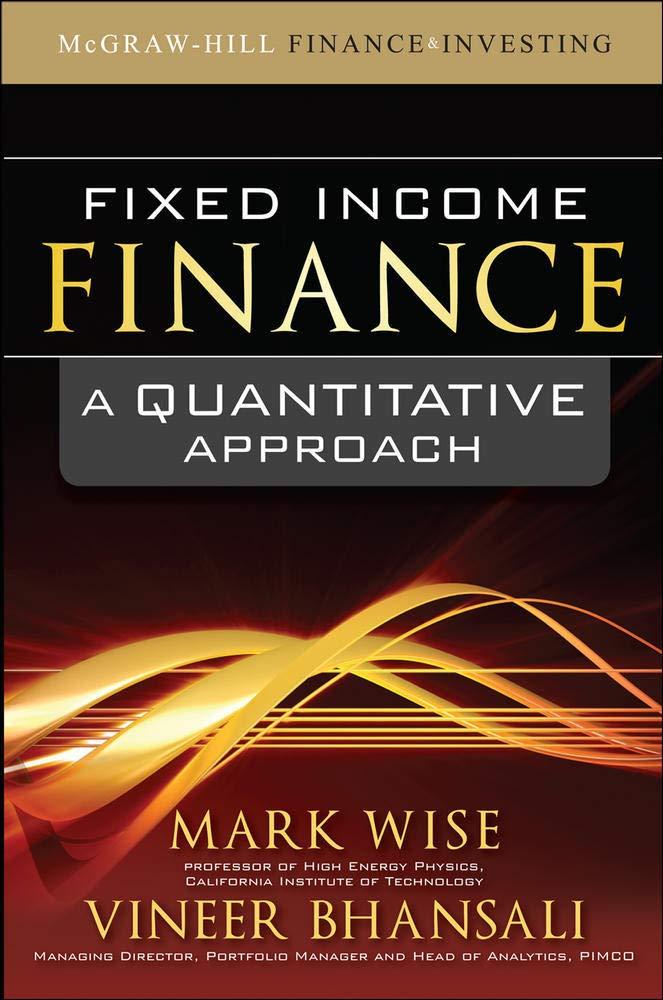Question
Average Annual Returns for U.S. Small Stocks, Large Stocks (S&P 500), Corporate Bonds, and Treasury Bills, 1926-2017 Investment Average Annual Return Small stocks 18.7% S&P
| Average Annual Returns for U.S. Small Stocks, Large Stocks (S&P 500), Corporate Bonds, and Treasury Bills, 1926-2017 | |
| Investment | Average Annual Return |
| Small stocks | 18.7% |
| S&P 500 | 12.0% |
| Corporate bonds | 6.2% |
| Treasury bills | 3.4% |
| Volatility of U.S. Small Stocks, Large Stocks (S&P 500), Corporate Bonds, and Treasury Bills,1926-2017 | |
| Investment | Return Volatility (Standard Deviation) |
| Small stocks | 39.2% |
| S&P 500 | 19.8% |
| Corporate bonds | 6.4% |
| Treasury bills | 3.1% |
Assume that historical returns and future returns are independently and identically distributed and drawn from the same distribution.
a. Calculate the 95% confidence intervals for the expected annual return of four different investments included in the tables. (the time period spans 92 years).
b. Assume that the values in the tables are the true expected return and volatility (i.e., estimated without error) and that these returns are normally distributed. For each investment, calculate the probability that an investor will not lose more than 2% in the next year. (Hint: For each investment, you can use the function normdist(x,mean,volatility,1) in Excel to compute the probability that a normally distributed variable with a given mean and volatility will exceed x where x in this case is 2%. Then subtract that probability from 100% to find the probability that an investor will not lose more than 2%.)
c. Do all the probabilities you calculated in part (b) make sense? If so, explain. If not, can you identify the reason?
A. What is the lower and upper bound for: small stocks, S&P 500, corporate bonds and Treasury Bonds. (percentage)
B. The probability of not losing more than 2% for small stocks is ______. (Round to two decimal places.)
The probability of not losing more than 2% for the S&P 500 is ______. (Round to two decimal places.)
The probability of not losing more than 2% for corporate bonds is _____.(Round to two decimal places.)
The probability of not losing more than 2% for Treasury bills is ______. (Round to two decimal places.)
C. Do all the probabilities you calculated in part (b) make sense? If so, explain. If not, can you identify the reason?
A. Yes. All these investments involve risk, and so you expect to lose money some of the time.
B. No. The probability that you can have a return on the S&P less than 2% is not nearly as high as 76.02%.The problem is that the return of the S&P 500 is not normally distributed.
C. No. The probability that you can have a return on small stocks less than 2% is not nearly as high as 70.13%. The problem is that the return of small stocks are not normally distributed.
D. No. You cannot lose money on Treasury bills. The problem is that the returns on Treasury bills are not normally distributed.
Step by Step Solution
There are 3 Steps involved in it
Step: 1

Get Instant Access to Expert-Tailored Solutions
See step-by-step solutions with expert insights and AI powered tools for academic success
Step: 2

Step: 3

Ace Your Homework with AI
Get the answers you need in no time with our AI-driven, step-by-step assistance
Get Started


